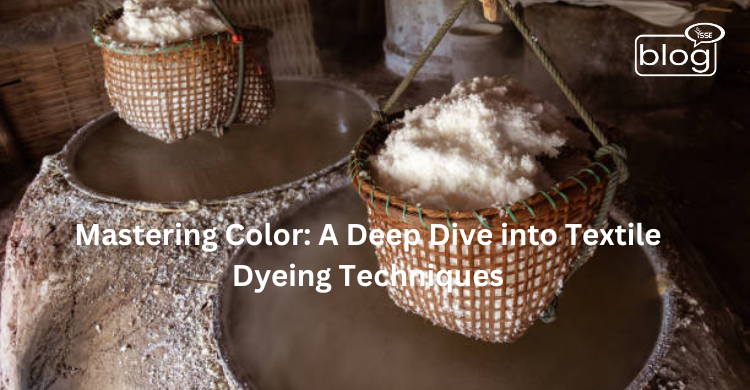Can you imagine the world without color? If there is no color in the world, our life will also become black & white along with nature. Color is everywhere & it’s a language that commonly communicates emotions, cultures, and identities. We can gain natural color from nature, which is very pleasant to us. But now in textiles, synthetic colors are being prepared in the lab, & it is very common. In the world of textiles, colors are used as a dyeing or printing component to dye or print fabric materials. Textile color is an art & science, that has evolved over centuries, showing creativity with chemistry to achieve various shades that decorate our lives.
The Evolution of Textile Dyeing
From the ancient period to modern-day fashion houses, textile dyeing has a remarkable evolution to create different shades & patterns of fabric by using color. Previous dyeing techniques depend on natural resources such as plants, minerals, and insects to extract pigments. These natural dyes have some limitations in colour range. Synthetic dyes were discovered in the 19th century and revolutionized the textile industry, now it is used to dye fabric which has a wide range of shades.
Types of Dyeing Techniques
There are many kinds of textile dyeing techniques & some important dyes that are used in the textile industry are given below-
- Reactive dyeing: Reactive dye is a water-soluble dye. It is a synthetic dye & prepared in the lab. It is used to dye cellulosic fiber like cotton, rayon, or flax, but polyamide, wool, silk, & acetate fibers can also dyed with reactive dye. It creates a highly strong bond, known as a covalent bond.
- Direct dyeing: This involves immersing the fabric in a dye bath containing the desired color. Commercially a long ago, cellulosic fiber was dyed with direct dyes. But direct dye has a direct affinity towards cellulosic fiber & can break the H+ bond, & which is not beneficial for fabric.
- Disperse dyeing: It is a water-insoluble dye, to reduce it “Dispersing agent” is used & this dye is free from ionizing groups. This dyestuff is used for dyeing man-made synthetic or hydrophobic natural fiber like acetate, polyamide, polyester, etc. Especially to dye polyester fiber, dispersed dyes are used widely. Disperse dyes are smaller in molecular size than other dyestuffs.
- Basic dyeing: This dye is cationic dye because in solution the basic dye molecule ionizes, causing its colored component to become an action of positively charged radicals. It is a salt of organic bases & used to dye wool, silk, acrylic, and mod-acrylic fiber. This dye has highly tinctorial value towards textile materials & provides a bright shade on fiber.
- Vat dyeing: In the ancient period, there wasn’t any reducing agent. So, vat dye, which is derived from nature is reduced by the process of fermentation with organic matter in a wooden vessel. This dye is water insoluble dye & to reduce it Na2S2O4 is used as a reducing agent to form a leuco compound, which is used to dye fabric. Here oxidation is necessary.
Sustainability and Innovation
In the present years, the textile industry has given its best to practicing sustainable dye, which marks a strong place in the industry. Most of the dyeing particles can generate harmful pollutants in our nature. It was necessary to generate & reuse these dyeing particles to save nature. Most of the innovations involved with eco-friendly dyes are derived from natural resources, dyeing processes & waterless dyeing technologies that are trying to use minimum energy. Maximum dealer are concerned about their business. That’s the reason they produce synthetic products which are not simply bio-degradable. But now consumers are concerned about their health & demand for sustainable products in textile productions & this could be benefitted for our environment.
The Future of Textile Dyeing
The future of textile dyeing holds promise for even greater innovation. Researchers are trying to explore more biodegradable dyes which are essential for us, as well as dyeing techniques that require minimal water usage, and the integration of nanotechnology which can enhance color fastness and durability.
Mastering color in textile dyeing is a complex journey that involves creativity, chemistry, history, and imagination. As consumers become conscious of the environmental and social impacts of textile production, the industry is Ready to accept sustainable practices while continuing to push the boundaries of creativity in color expression. We may recognize the huge impact that color has on everything that we wear and the environment around us by appreciating the complexity of textile dying instructions.
To read more blogs, click here
Writer,
Akhi Akter
Intern at Content Writing Department
YSSE

